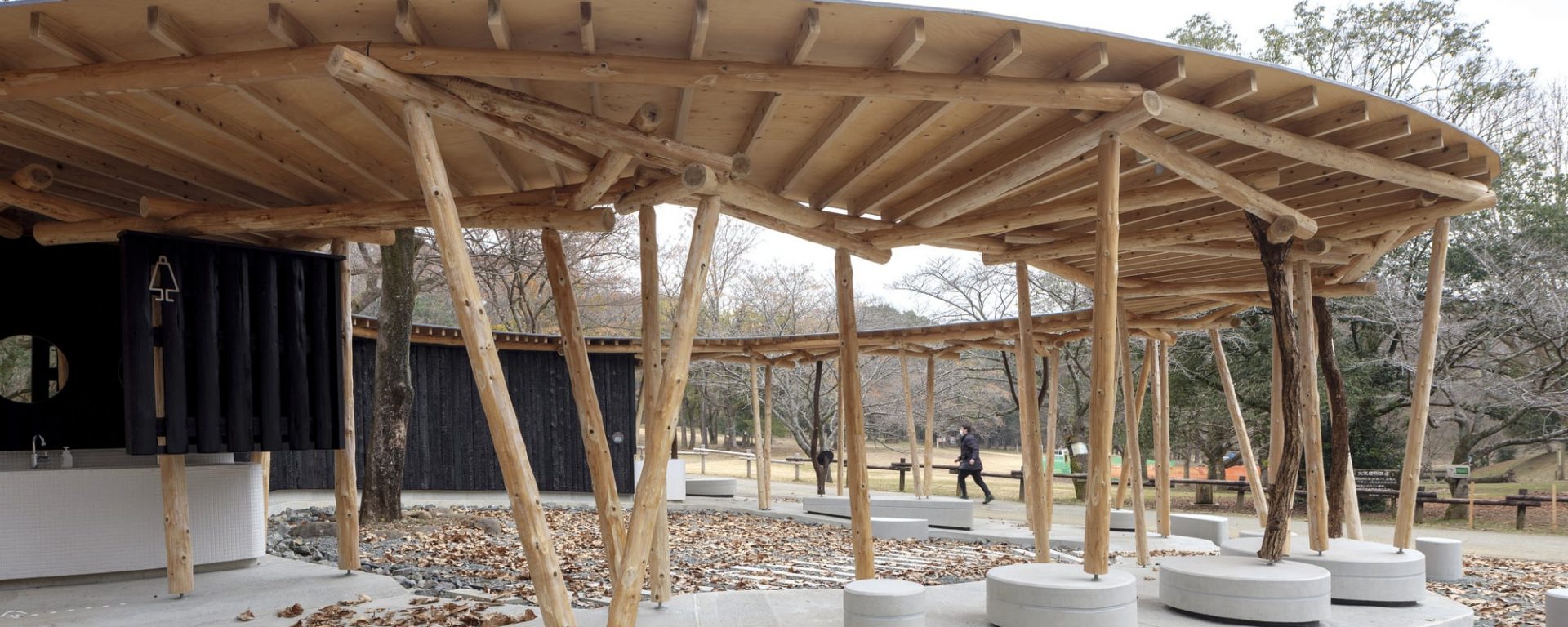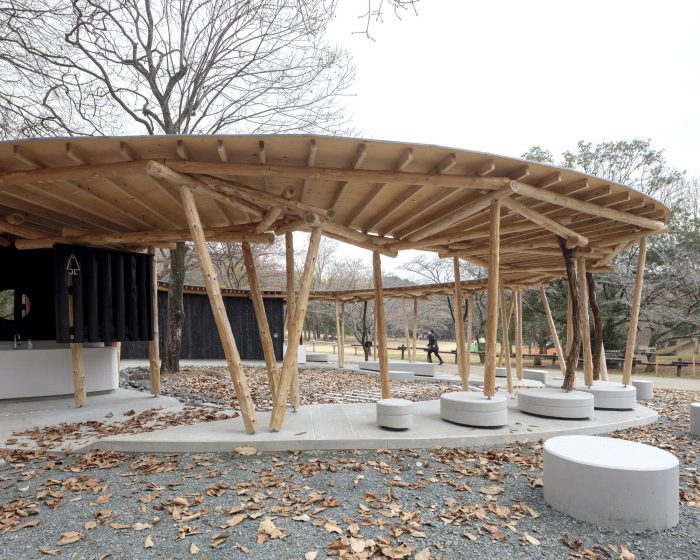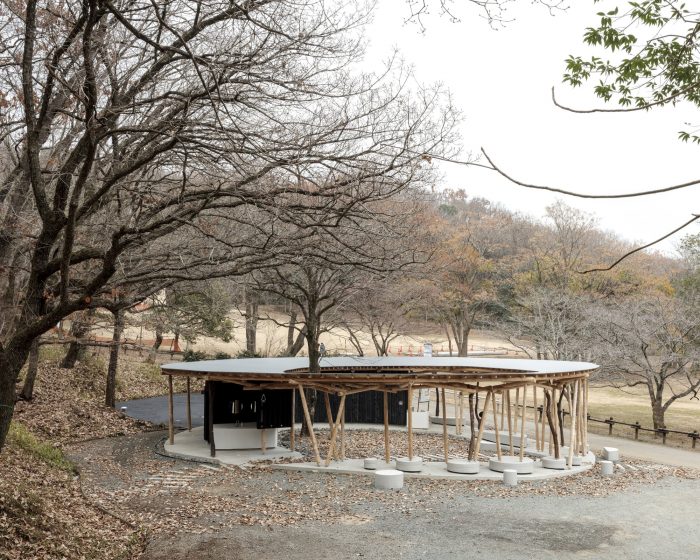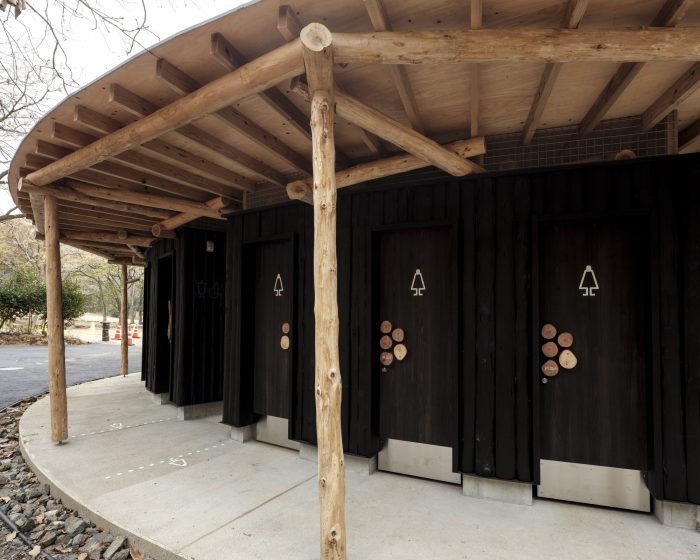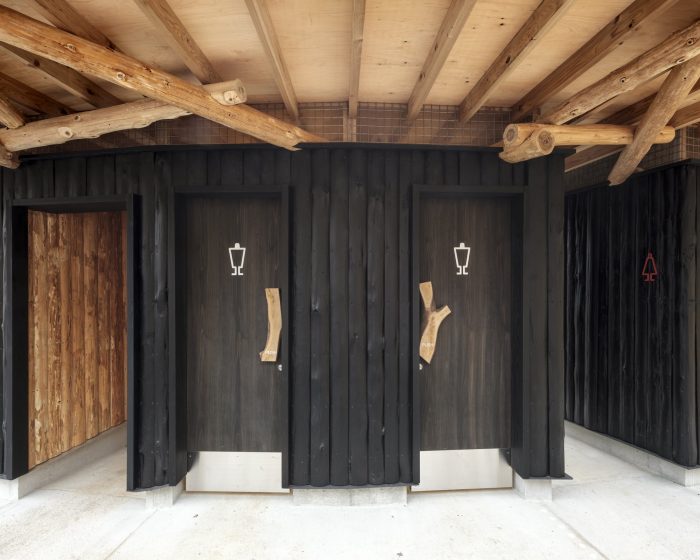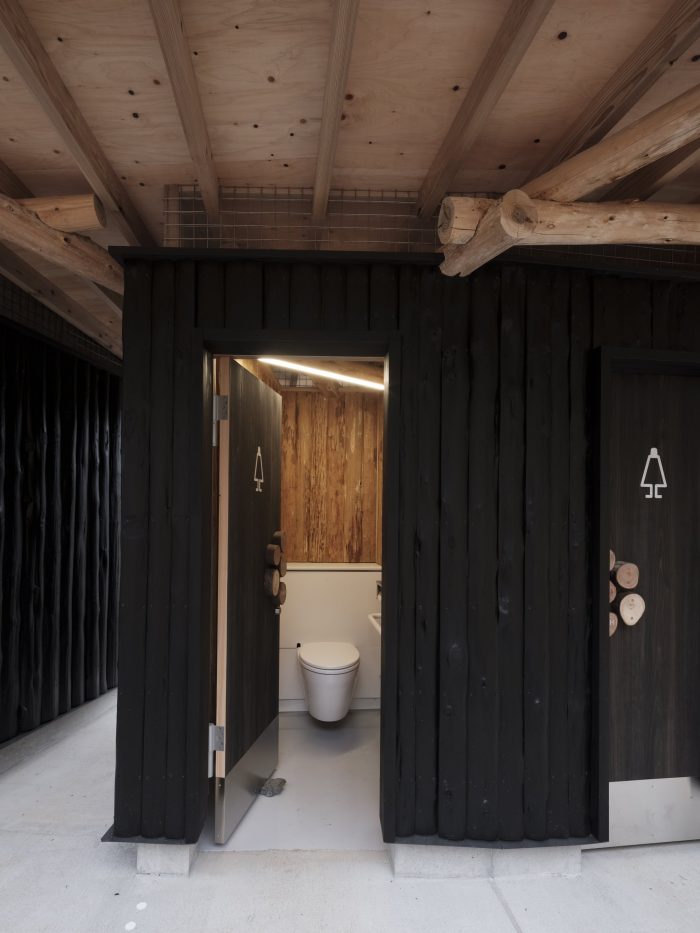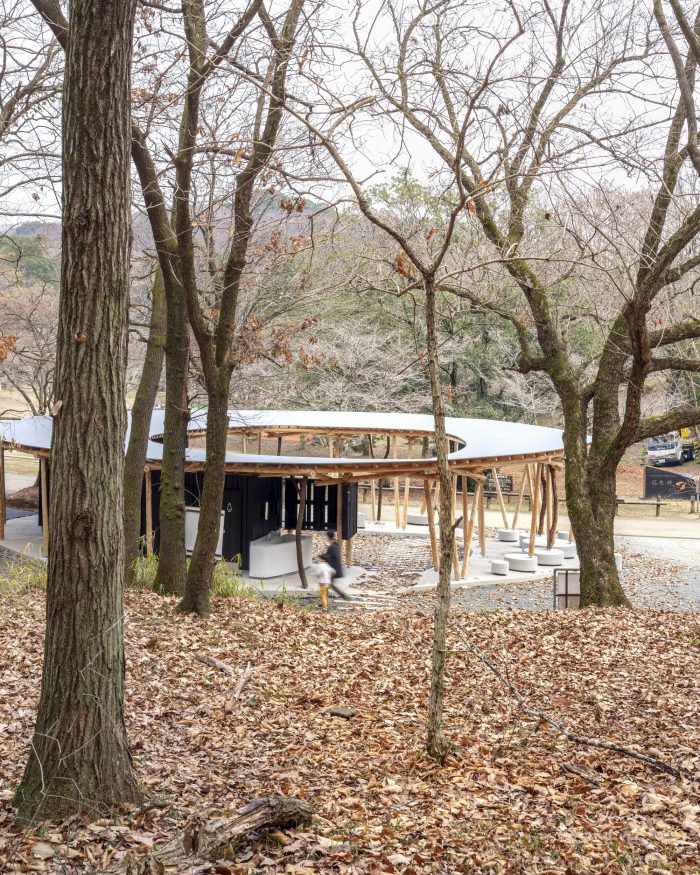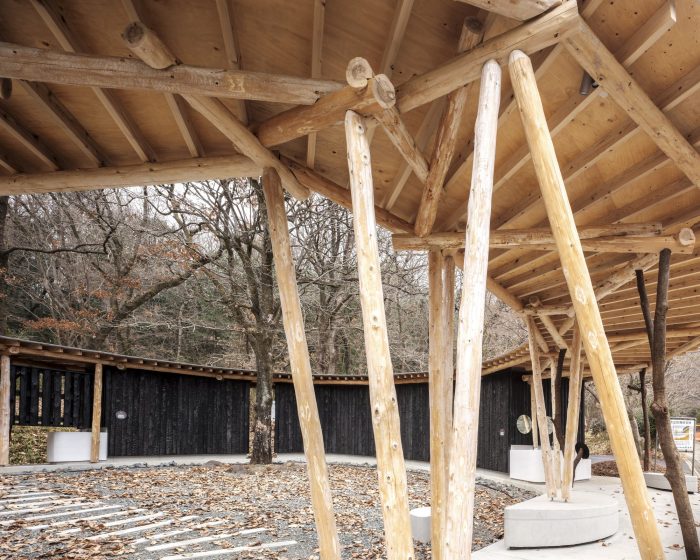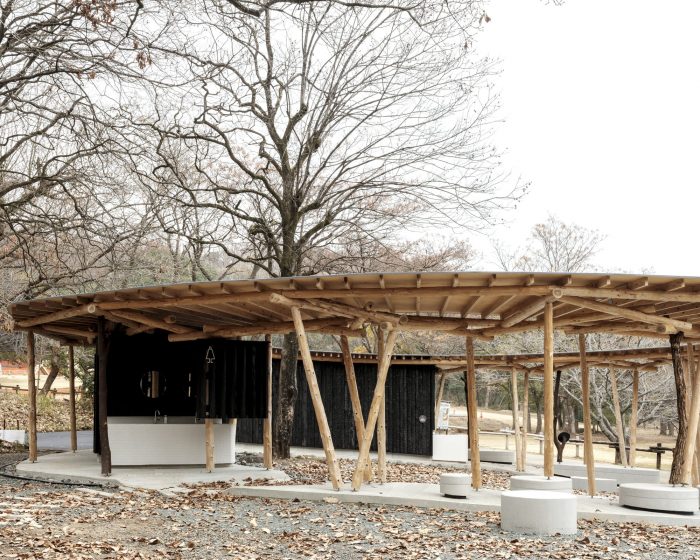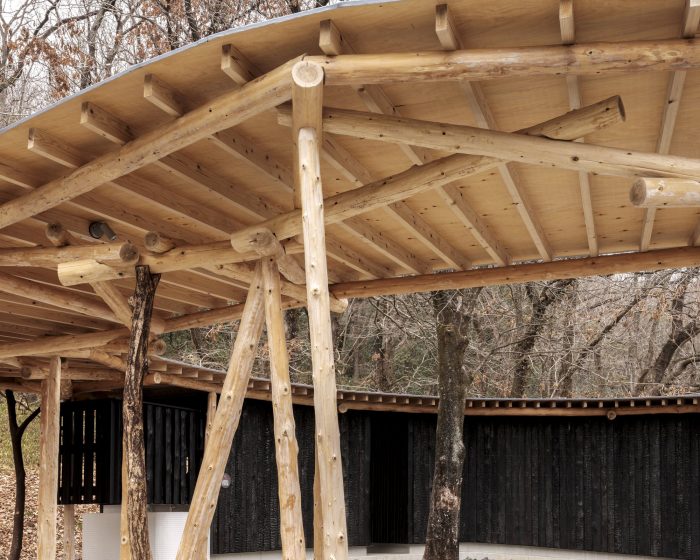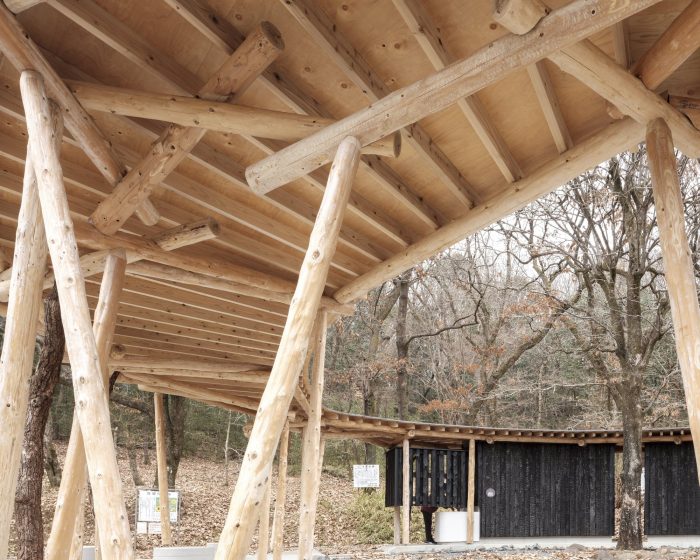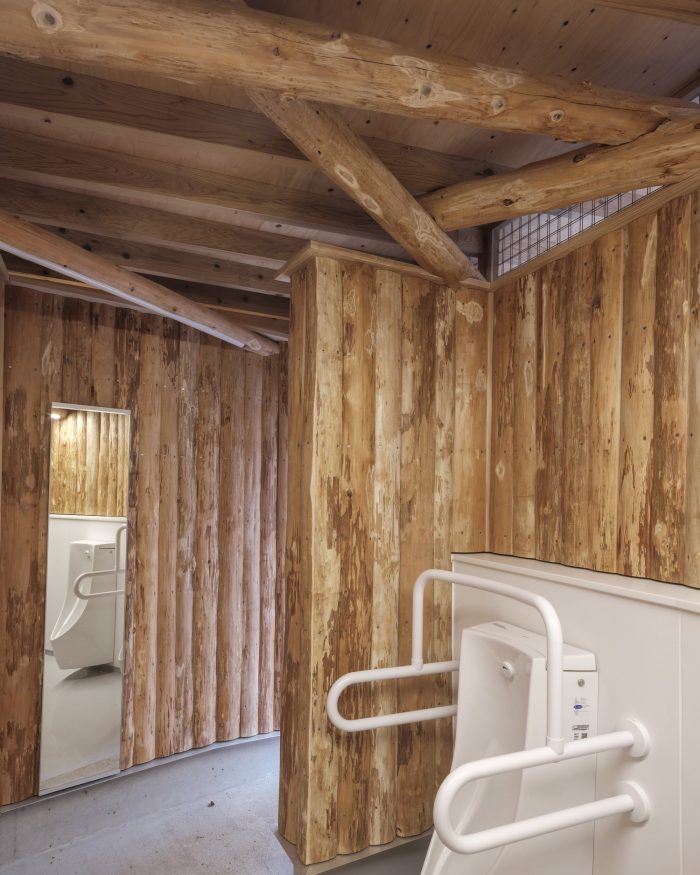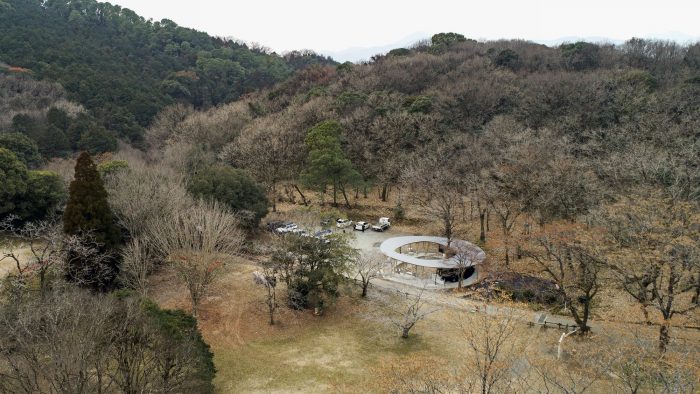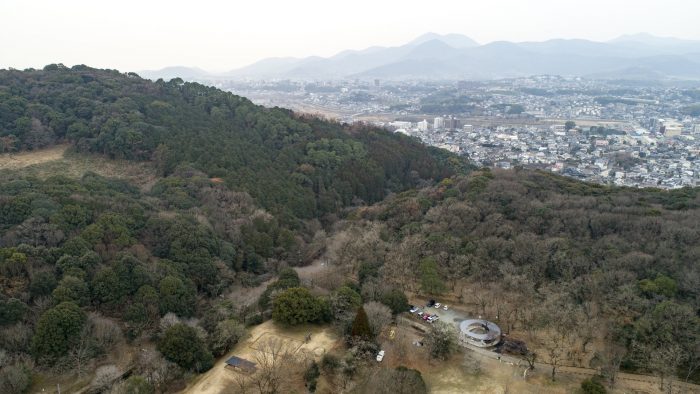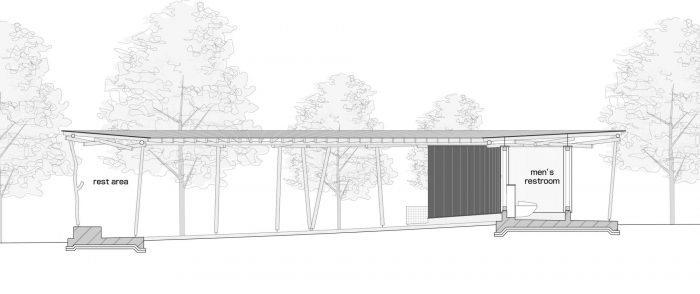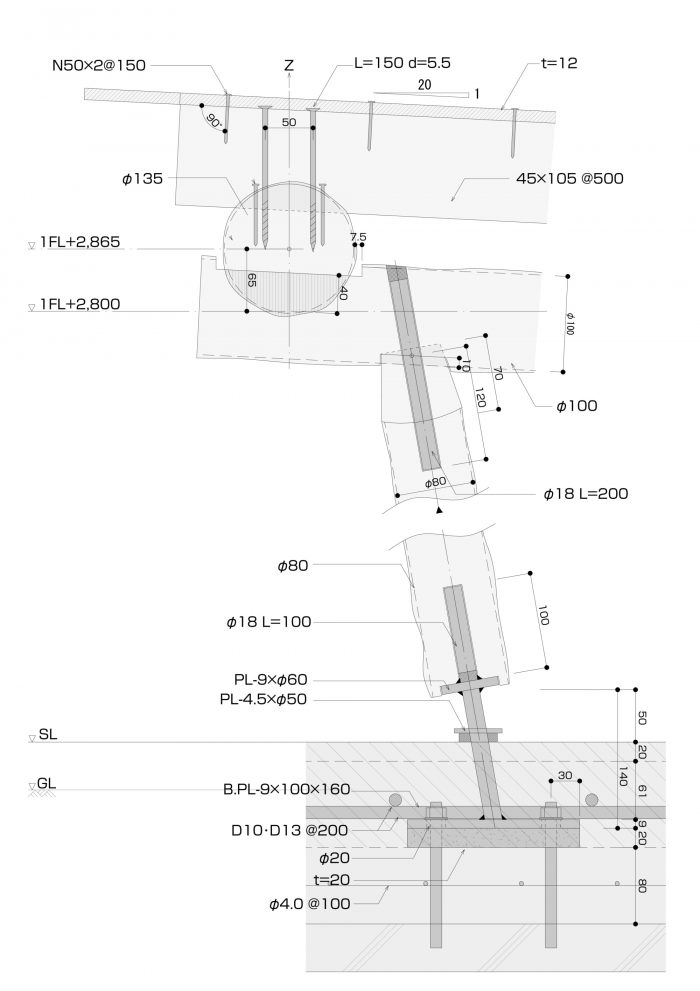通过原木建筑将人和自然联系起来。在规划一个将建在被称为 “辰山休息森林 “的公园内的公共厕所时,我们希望创造出与丰富的自然环境相协调的建筑,并为林业非常活跃的熊本县作出贡献。虽然人们对脱碳社会的木材抱有极大的期望,但国内木材的价格持续停滞不前,林业已经枯竭。通过使用原木作为建筑材料,我们试图重新评估木材的价值,因为几乎100%的天然树木都可以被利用。
Connecting people and nature through log architecture. In planning a public toilet to be built in a park called ‘Tatsudayama Rest Forest’, which has been loved by many people as a ‘forest in the city’, we wished to create architecture in harmony with the rich nature and to contribute to Kumamoto Prefecture, where the forestry industry is very active. While great expectations are focused on timber for the decarbonized society, the price of domestic timber continues to stagnate and the forestry industry is exhausted. By using logs as building materials, we tried to re-evaluate the value of wood, as almost 100% of the natural trees can be utilized.
自史前时代起,原木就被用作建筑材料,但自现代以来,由于需要验证安全计算和建筑的合理性,木材的标准化和商业化取得了进展。因此,在锯木过程中出现了更大的损失率和更大的环境影响。利用现代分析和加工技术,该团队探索了利用个别不同长度、厚度和形状的原木的方法,这些原木在零售市场上是没有的。该设施位于自然和人类活动的交汇处,如森林、草坪区、人行道和停车场。
Logs have been used as building materials since prehistoric times, but since the modern age, the standardization and commercialization of wood have progressed due to the need to verify safety calculations and the rationality of construction. As a result, greater loss rates and greater environmental impact during sawing have been incurred. Using modern analysis and processing techniques, the team explored ways to utilize logs of individually different lengths, thicknesses, and shapes, which are not available in the retail market. The facility is located at the intersection of nature and human activities, such as forests, lawn areas, walkways, and car parks.
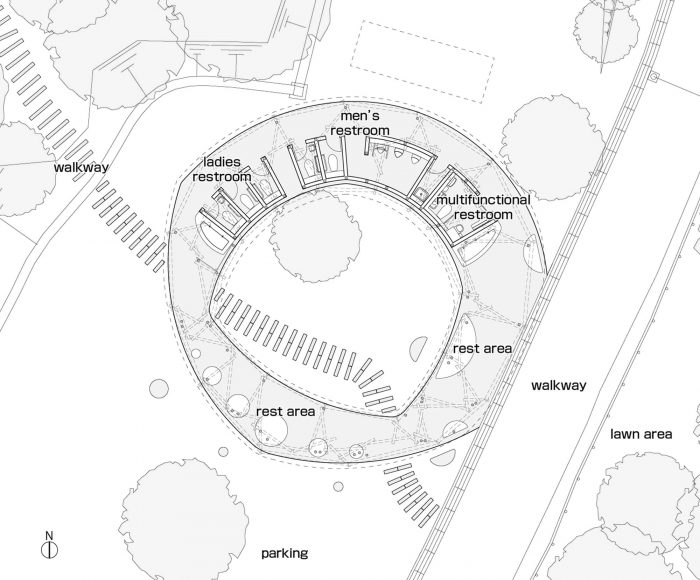
基于一个可从各个方向进入的圆形遮蔽空间,厕所亭、休息区和盥洗室被安排在屋顶下,以适应邻近的环境,在辰山创造一个体验自然的地方。框架的对等结构,将仅被剥去树皮的原木与具有个人独特表现的原木结合起来,加深了建筑与自然之间的关系。以不浪费木材为目的,该项目使用了直径约为100毫米的薄原木和树尖,这些通常是未被充分利用的部分,被变成了木片。此外,锯木的下脚料被用来做墙体木材。此外,烧焦的雪松,一种传统的当地材料,被生产出来并作为外墙覆盖物。
Based on a circular sheltered space accessible from all directions, toilet booths, rest areas, and washrooms are arranged under the roof to suit the adjacent environment, creating a place to experience nature in the Tatsuda Mountains. The reciprocal structure of the frame, combining logs that have only been stripped of their bark from logs with individual, unique expressions, deepens the relationship between the architecture and nature. With the aim of using up the wood without any waste, the project used thin logs with a diameter of about 100 mm and the tips of the trees, which are usually under-utilized parts that are turned into chips. In addition, the scraps of sawn timber are used for wall timber. Furthermore, burnt cedar, a traditional local material, was produced and used as an external wall covering.
大部分木材都是在熊本县生产的,所有的木材干燥、加工和防腐处理都在熊本县完成,从而最大限度地利用了当地资源。熊本是一个有着根深蒂固的处理木材文化的地区,有关人员对木材的浓厚兴趣、知识和技能有助于使这一建筑成为现实。我们希望熊本的 “森林和人的圈子 “在未来能够继续下去并扩大。
The majority of the timber is made in Kumamoto Prefecture and all wood drying, processing, and preservation treatment are completed in Kumamoto Prefecture, thereby making the most of local resources. Kumamoto is a region with a deeply rooted culture of handling wood, and the deep interest in wood, knowledge, and skills of the people involved helped to make this building a reality. We hope that the ‘circle of forests and people’ in Kumamoto will continue and expand in the future.
Architects: Yamashita Sekkei
Area : 90 m²
Year : 2021
Photographs :yashiro photo office
Manufacturers : Toto, TAJIMA ROOFING
Design Team : Tatsunori Sakamoto, Uchimura Azusa, Maehara Takeji
Structural Engineers : Takuya Sone, Hiroaki Ishizuka, Yasuhiko Matsumoto
Mechanical Engineers : Yuta Masuda
Constructions : Woody Farm
City : Kumamoto
Country : Japan

